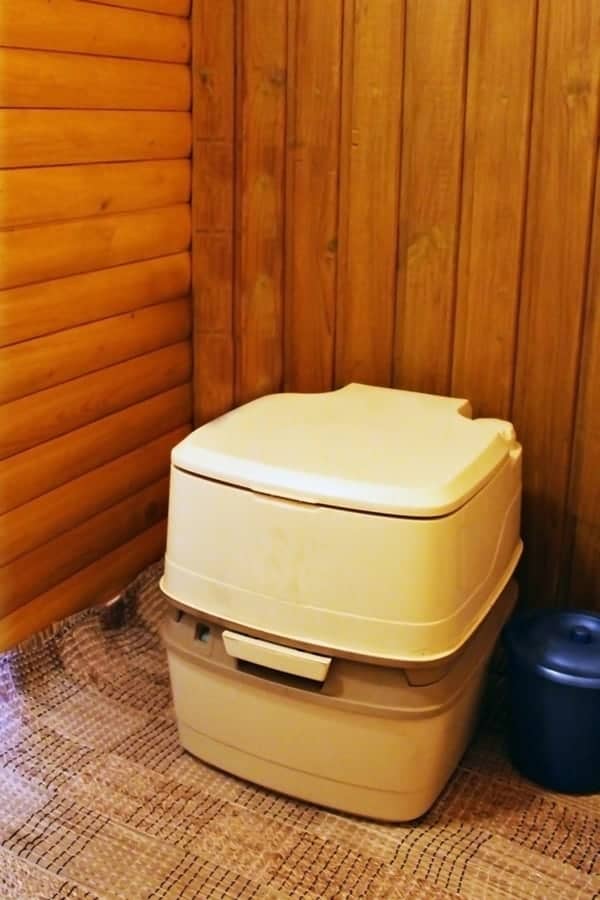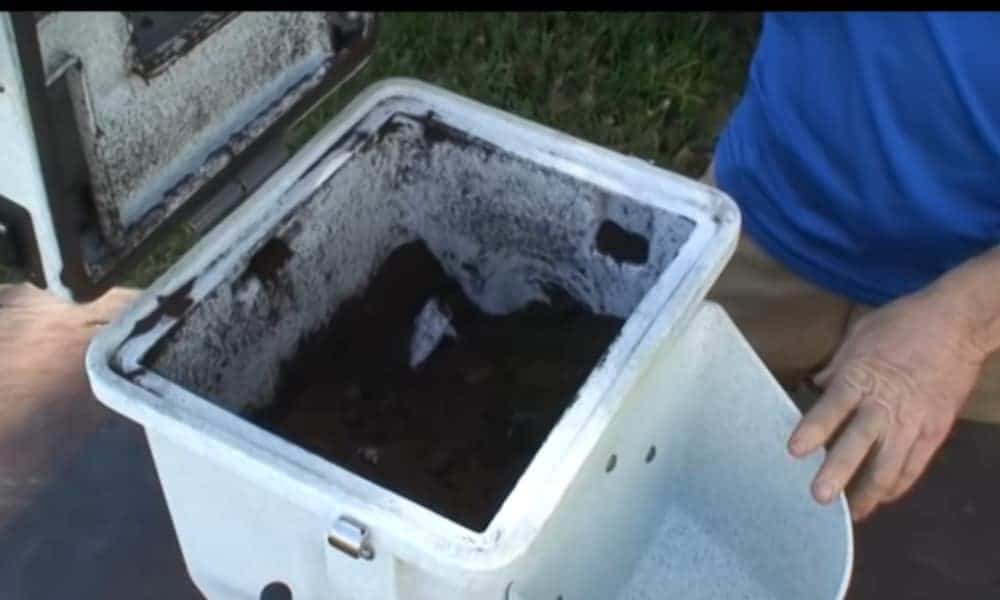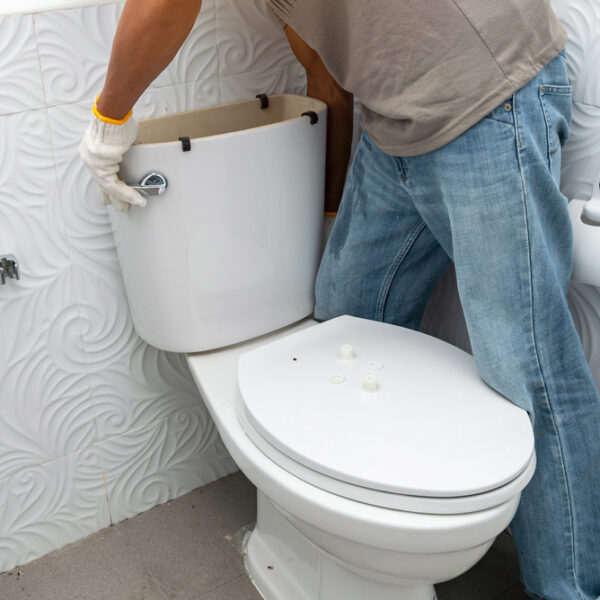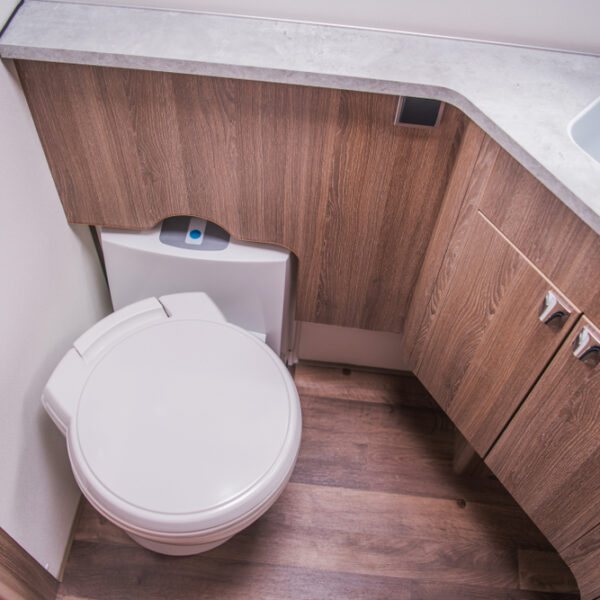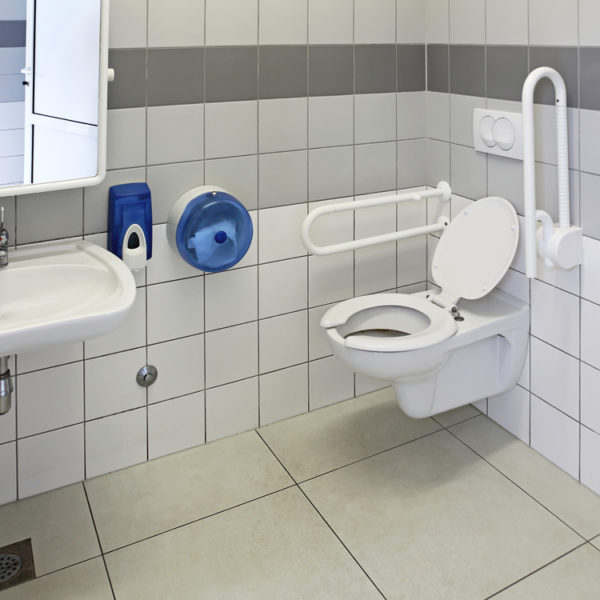If you’re living in a mobile home or off-the-grid, it will be best you invest in a composting toilet. This system stands as one of the most economical options because it doesn’t need any expensive plumbing works. Also, using this toilet will help you save more on utility bills since it is a waterless toilet.
For those looking for an ideal RV toilet, this is the best bet for you since it doesn’t require any hookups and septic systems.
One thing you might be wondering is how does a composting toilet work to deal with the waste deposited? Well, you don’t have to worry because we will provide great insight into how it works.
What You Need To Know About Composting Toilet?
This system uses a biological process to decompose human waste. And depending on the maker, you might need to add a small amount of activated carbon after each use to speed up the breakdown process.
The exciting part is that there is no need flushing toilet with water to get rid of feces into the septic system. It also serves as one of the best alternative sewage treatment devices. The reason is that it helps to convert your feces into compost for soil use.
Today, many regard it as a waterless or tankless toilet because it doesn’t need water or septic system. Instead, aerobic organisms come into play to help break down the human waste into compost. However, you should ensure to create an ideal environment for the bacteria so that it breaks down the waste.
Now let’s tell you how a compost toilet works.
How Does a Compost Toilet Work?
The moment you excrete into this toilet, the waste deposited separate, creating a way for decomposition. Depending on the type, the urine moves into a container or the down part of an evaporating chamber, containing aerobic organisms. These aerobic organisms include fungi, compost worms, bacteria, and other tiny insects.
Immediately the urine gets there, the aerobic bacteria come into action, converting the waste into nitrogen enrich liquid, which makes it evaporate faster. For solid waste, this also moves into another chamber where an aerobic organism slowly breaks it down into dry compost material.
However, a small amount of absorbent carbon material is essential to make the waste break down faster and effectively. Such materials include wood chips, ash straw, and sawdust, etc.
The most important thing when using this toilet is to ensure all the element stays active to break down the waste continuously. These elements include the oxygen level, aeration, temperature, aerobic organisms, and carbon materials.
In some, the makers employ a manual agitator. This feature helps to keep the waste well aerated to maintain a required oxygen level in the composting chamber. Others feature a chamber with a handle, which you have to rotate after each use to maintain a level of oxygen and aeration needed in the chamber.
Temperature also matters a lot to keep the aerobic organism active. For this reason, some models use electric heat system to maintain optimum warmth for a faster-composting process. For others, however, they use a natural aeration mechanism that helps provide enough warmth in the chamber.
Components of a Composting Toilet
If you plan to invest in this toilet, it will be best you know its component. As said earlier in this article on how does a composting toilet system work, the latrine uses a natural process to break down the waste into compost. But there are components which make it perform this way.
When it comes to this toilet system, the two most important parts are the seat section and the collection unit. The seating section allows you to position comfortably and poop out the waste from your body.
On the other hand, the collection unit is what differentiates it from the regular toilets used in most homes. It serves as a major part of the toilet as this is where the gathering and break down take place. There are two main sections in this part, which include.
-
Composting Chamber
This part plays a significant role in the toilet. First, it serves as a storage section where all the waste falls and is reserved for decomposition to take place.
Also, this chamber is where the human waste and urine convert into useful compost material. Most makers of this toilet use a slope-shape design in the chamber to make the solid waste and urine to separate easily.
-
Aeration Unit
For compost toilets to perform at its best continuously, smelly gases have to go out naturally. With that said, the aeration unit is designed to help maintain the required level of oxygen, aeration, and temperature. This part is essential as it enables a better decomposition process at all time.
Designs of a Compositing Toilet
Depending on the maker, there are different ways a composting toilet work to achieve the final result. Let’s give you an insight into that.
1. Nature Head
In this composting system, the liquid or urine is first separated into a bottle equipped at the front which you can empty when it gets full.
As for the solid waste, this moves into the composting chamber containing carbon additives, commonly known as “bulking agent.” Then you will need to turn a handle to mix the solids and bulking materials after every use.
2. Sun-Mar System
This composting system has a large bio-drum which separates the urine or liquids, from the solid wastes. Hence, allowing the dry carbon materials mix with the solids so that the decomposition process can take place quickly.
Also, this toilet features a three-chamber system and a finishing drawer. These chambers collect all the waste and reserve them for decomposition while the finishing drawer is used to remove the end-products.
3. Major Compost Designs
The major way a composting toilet works is that it has a toilet section where you sit better and empty your bowel. Then all the waste moves into a chamber for break down process and drying.
Generally, the compost toilet comes with a chamber that helps to separate and decompose the waste. Depending on the manufacturer, some have three chambers, while others might feature just one or two.
Furthermore, in a multi-chamber design, the urine is first separated into a different chamber where evaporation takes place. Then the waste remains in a separate chamber to be mixed with carbon additives.
You will need to turn the composting chamber to mix them properly, thereby allowing the bacteria to convert the waste into compost. Turning it also helps to introduce enough amount of oxygen, which feeds on the bacteria, thus reducing the smell.
Most composting toilet with multiple chambers comes with a finishing drawer where all the end-products/compost stays before they are removed. This drawer helps to prevent new waste from mixing with the finished compost.
Types of Composting Toilet
There are different types of composting toilets, and each of them has a way they function. However, the dry compost which they produce is more or less similar. Let’s reveal to you these types.
a). Slow Composting Toilet
The slow composting toilet, commonly called the “Cold composting,” allows the compost to pile up gradually before they are taking out when full. Unlike other types, the compost/end-products from this toilet might still contain pathogens that are harmful to human health and plants.
You might want to ask how does a self-composting work to handle the waste deposited. In this type, all the waste you dropped into the toilet is separated from the main part. You can close it after each use for a more composting process to take place.
Most times, you might need to use the vermicomposting process by adding red wriggler worms to hasten the composting. According to some findings in the US, these worms used are mainly offensive species and need to be handled with full precaution.
Compared to the regular flushing toilet, the slow composting types take more time to decompose the excreta and reduce the pathogen in the waste. With that said, these toilets are mainly meant for seasonal use or in remote trail areas.
b). Active Composters
An active composter system, commonly known as the “Self-contained” toilets, has a chamber attached to the toilet. they are larger in size compared to the regular toilets.
Depending on the models or makers, some come with aeration fans and heating elements. These features help to maintain the temperature and oxygen to the required optimum level all the time.
Most users of these toilets usually apply a small amount of absorbent carbon material, commonly known as “Bulking agent.” This material helps to absorb the waste moisture and accelerate the aerobic composting process.
c). Vermicomposting Flushing Toilet
A vermicomposting toilet uses earthworm to speed up the decomposition of the waste into compost. This toilet has a filter bed that holds all solid waste while the liquid passes through a filter screen and then removed by a reactor.
The composting earthworm and aerobic bacteria present then engaged in action with the solids (feces and toilet paper). It then converts them into stable organic compounds.
Unlike other composting toilets, this type uses water to flush off the waste deposited. The exciting part is that you can connect it to any low-flush tank or micro-flush toilet.
Wrap Up
With everything mentioned above, you don’t need to ask how does a composting toilet work anymore. These toilets are the ideal options for those living in a remote location or mobile home. The best part of this toilet is that the dry compost material, which is the end-products, can be of great benefit in the garden and soil.
These latrines are commonly a tankless toilet, which means you don’t need any hookups or septic systems. However, for the vermicomposting types, you might need to connect them to a low-flush toilet.

